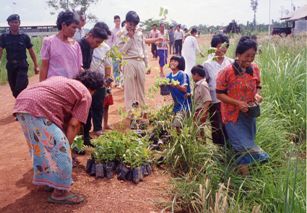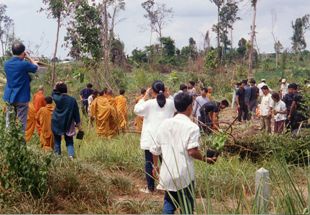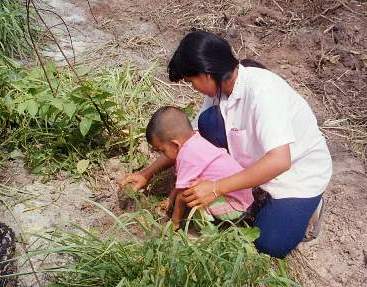


Albizia procera
White siris
(drawing to come)
Origin
Australia and Oceania, including Papua New Guinea, Southeast Asia, South Asia.
Ecology
Annual rainfall: 500-5000mm
Normal temperature range: 21-32°C
Altitude range: 0-1300m
Seasonal adaptability: tolerates 6-8 months dry season
Soils: moderately acid-tolerant to alkaline soils, pH 5.5-7.5; grows well on shallow soils but prefers alluvial soils.
Light requirement: moderately demanding.
Other site limitations: easily damaged by frost; branches of mature trees break readily in high wind.
Description
Height at maturity: 25m.
Diameter at breast height (1.3m) at maturity: 35cm.
Form: good; clear stem but often curved; open canopy.
Coppicing ability: fair to good.
Growth: on good sites, 12-year old trees reach 0.9-1.1m in diameter and 15m tall.
Other: fixes nitrogen.
Primary advantages
Good quality timber grows well in shallow stony soils and areas with a long dry season.
Primary disadvantages
Its frost susceptibility limits planting at higher elevations.
Products and yields
Wood products: Timber. Yields of 10m3/ha/year are reported on good sites. Wood quality is good; used for cabinets and veneer.
Fuelwood: fair quality; 4900-5000kcal/kg.
Fodder: leaves provide good forage.
Other: wood is used as a substitute for walnut and general construction. In Nepal leaves used as insecticide.
Propagation
Easily by seedlings, cuttings, stumps, root suckers or direct sowing.
Seed treatment
Plant seeds in boiling water, remove water from heat, let cool over night, then dry and store.
Management
Can be heavily lopped or pollarded to provide forage. In open stands, prune to improve stem quality.
Agroforestry uses
Used in hedgerows, pastures, fuelwood plantings.